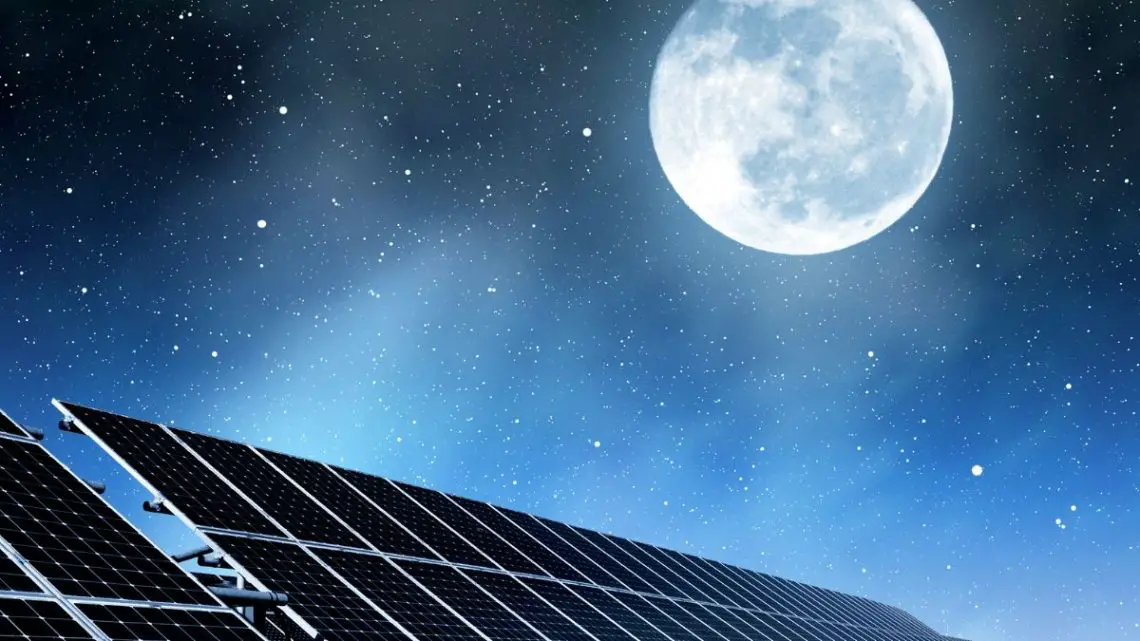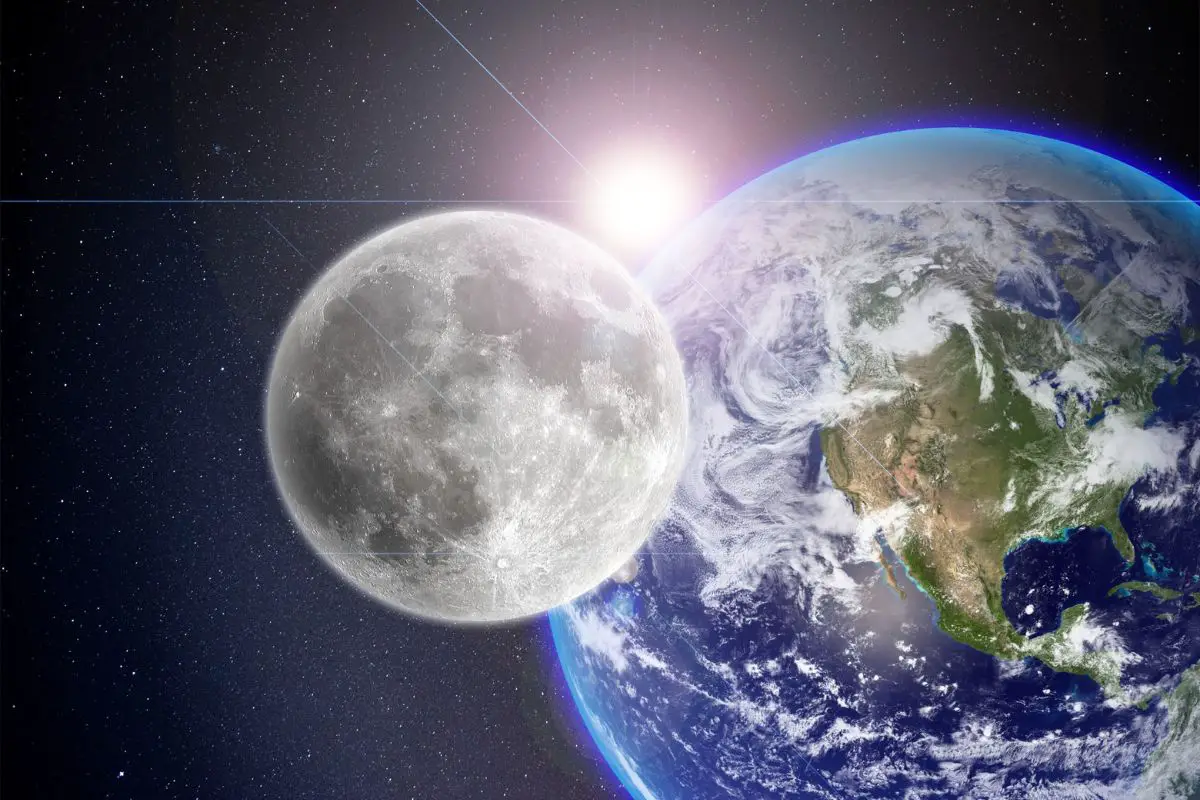
Cutting-edge Space Station’s Solar Energy Could Fuel Potential Lunar Colonies
July 28, 2023A new conceptual design has been created called the Greater Earth Lunar Power Station.
The European Space Agency has partnered Astrostrom, a company based in Switzerland, to propose a new conceptual solar energy design known as the Greater Earth Lunar Power Station to provide a future Moon settlement with “megawatts of microwave power.”
The concept uses power harnessed from the sun at a butterfly-shaped space station.
From there, the solar energy would be transmitted from space to lunar settlements. Though it is unlikely that there will be moon settlements needing electricity in the very near future, the concept has considerable potential for use in the future.
Solar power stations in space have been drawing notable attention in recent years. Researchers have been examining ways to test how the tech can capture power from the sun and send this clean, renewable electricity to Earth. By placing photovoltaic panels in space, it means that the sun’s power can be captured without limits such as the restrictions of day and night on the Earth’s surface. As such, they have become a particularly appealing form of renewable electricity.
Beyond uses on Earth, solar energy collected from a space station could also power the Moon’s future residents.
Astrostrom has proposed the Greater Earth Lunar Power Station conceptual design. It offers a range of large-scale power production advantages that could offer clean power to residents of Earth and the moon.

The design of the space-based power station looks like a butterfly. It has become a component of the European Space Agency’s (ESA’s) Open Space Innovation Platform Campaign for “Clean Energy – New Ideas for Solar Power from Space.”
Made of “V-shaped solar panels”.
 The ESA’s news release announcing the butterfly-shaped sun power station said that it will likely be made of “V-shaped solar panels with integrated antennas, deployed in a helix configuration extending more than a square kilometer end to end.”
The ESA’s news release announcing the butterfly-shaped sun power station said that it will likely be made of “V-shaped solar panels with integrated antennas, deployed in a helix configuration extending more than a square kilometer end to end.”
If the researchers are correct about this space-based solar energy design, it has the potential to provide “megawatts of microwave power” to panel receivers that would be installed on the Moon’s surface. According to the scientists, the concept would be able to provide a constant 23 megawatts of electricity to the Moon in order to power its various operations.

Greater Earth Lunar Power Station FAQs
1. What is the Greater Earth Lunar Power Station (GE⊕-LPS)?
The GE⊕-LPS is a new conceptual design for a habitable space station in lunar orbit. This innovative design, proposed by the European Space Agency and Astrostrom, a Switzerland-based company, aims to harness solar energy for lunar operations.
2. How does the Greater Earth Lunar Power Station work?
The GE⊕-LPS is designed as a butterfly-shaped space station that collects solar energy. This energy can then be transmitted from space to lunar settlements.
3. Why is the Greater Earth Lunar Power Station important?
Though it might be some time before moon settlements need electricity, the GE⊕-LPS concept has considerable potential for future use. By placing photovoltaic panels in space, we can capture the sun’s power without limitations such as day and night on Earth’s surface, making it an appealing form of renewable electricity.
4. Who proposed the design for the Greater Earth Lunar Power Station?
The design for the Greater Earth Lunar Power Station was proposed by Astrostrom. It has become part of the European Space Agency’s Open Space Innovation Platform Campaign for “Clean Energy – New Ideas for Solar Power from Space”.
5. What is the design of the Greater Earth Lunar Power Station like?
The design of the space-based power station resembles a butterfly. It will likely be made of “V-shaped solar panels with integrated antennas, deployed in a helix configuration extending more than a square kilometer end to end”.
6. How much power could the Greater Earth Lunar Power Station potentially provide?
If the researchers are correct about this space-based solar energy design, it has the potential to provide “megawatts of microwave power” to panel receivers that would be installed on the Moon’s surface. According to the scientists, the concept could provide a constant 23 megawatts of electricity to the Moon to power various operations.
7. Why choose a ‘V’ design for a space station’s solar panels?
A ‘V’ design for a space station, particularly in context of solar panels, can have several potential advantages. It could maximize the surface area exposed to the sun, increasing energy capture efficiency. The V-shape can also assist in maintaining structural integrity and stability in space.
8. How does a ‘V’ shaped design benefit a space station’s aerodynamics?
A V-shaped design can be beneficial in terms of a station’s aerodynamics by reducing air resistance. This is crucial when the station is launched or when it moves in space.
9. What are the weight benefits of a ‘V’ shaped design?
A V-shaped design could help in reducing the overall weight of the station. This is an essential factor in space missions due to the high cost associated with launching heavier payloads into space.
10. Can a ‘V’ shaped design aid in scientific observations and research?
Yes, a V-shaped design could potentially provide simultaneous views of the Earth, Sun, and space, aiding in scientific observations and research.
Ready to test your knowledge on the most abundant element in the universe? Take our fun and engaging Hydrogen Quiz now! [forminator_quiz id=”58712″]




 HFN News is your leading source for fresh hydrogen and renewable energy updates. Amid the fast-paced growth of hydrogen companies, we provide top-notch news and insights about this exciting sector. Our coverage spans from hydrogen cars to global sustainable initiatives, and we highlight the latest in green jobs and developing hydrogen hubs. We invite you to share your local hydrogen news and explore today’s renewable energy job listings on our site. Thanks for choosing HFN News as your trusted guide to the hydrogen and renewable energy world!
HFN News is your leading source for fresh hydrogen and renewable energy updates. Amid the fast-paced growth of hydrogen companies, we provide top-notch news and insights about this exciting sector. Our coverage spans from hydrogen cars to global sustainable initiatives, and we highlight the latest in green jobs and developing hydrogen hubs. We invite you to share your local hydrogen news and explore today’s renewable energy job listings on our site. Thanks for choosing HFN News as your trusted guide to the hydrogen and renewable energy world!
